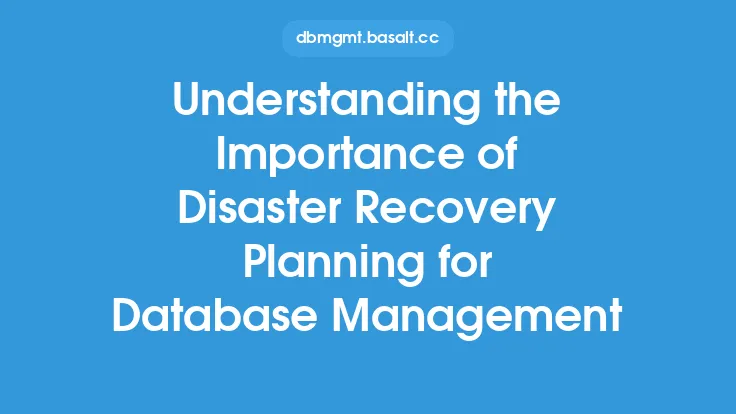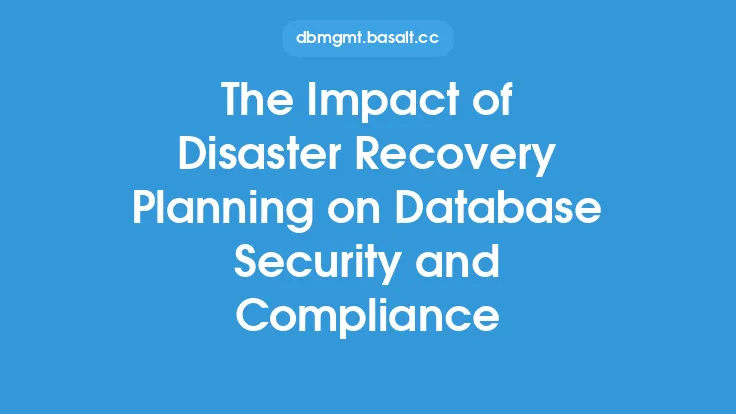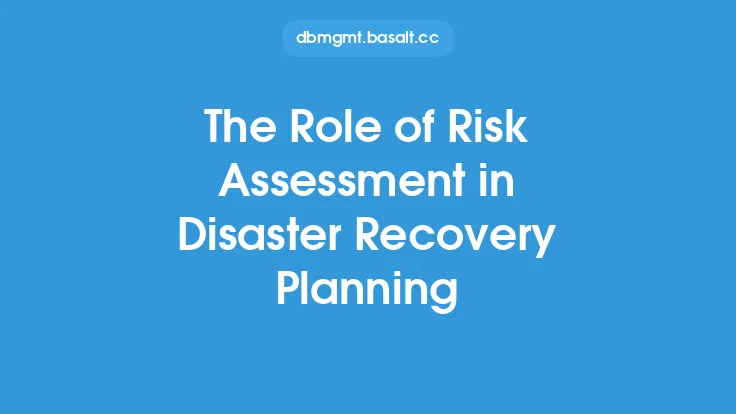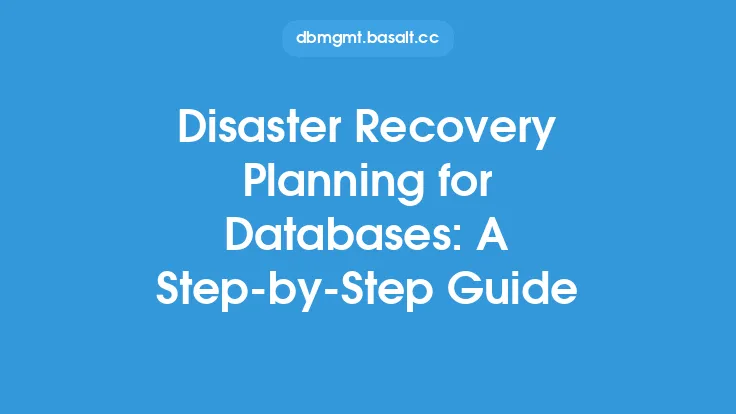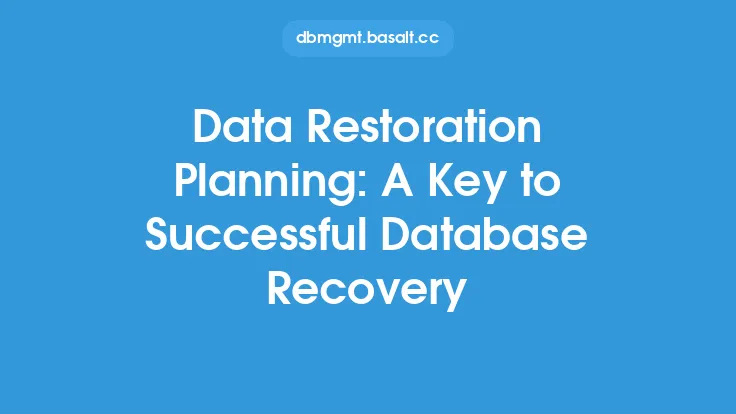Disaster recovery planning is a crucial aspect of database management that involves creating and implementing procedures to quickly recover from potential disasters, such as natural disasters, hardware failures, or cyber-attacks. A well-planned disaster recovery strategy ensures that an organization's databases are available and accessible, even in the event of a disaster, thereby minimizing downtime and data loss. In this article, we will delve into the importance of disaster recovery planning and testing, and explore the key components of a comprehensive disaster recovery plan.
Introduction to Disaster Recovery Planning
Disaster recovery planning is a proactive approach to ensuring business continuity in the face of unforeseen disasters. It involves identifying potential risks, assessing the impact of those risks, and developing strategies to mitigate or recover from them. A disaster recovery plan should be tailored to an organization's specific needs and should include procedures for backup and recovery, data replication, and system restoration. The plan should also include procedures for testing and maintenance to ensure that it remains effective and up-to-date.
The Importance of Testing in Disaster Recovery Planning
Testing is a critical component of disaster recovery planning, as it ensures that the plan is effective and that the organization is prepared to respond to a disaster. Testing involves simulating a disaster scenario and evaluating the organization's response to it. This includes testing backup and recovery procedures, data replication, and system restoration. Testing should be performed regularly, ideally every 6-12 months, to ensure that the plan remains effective and that any changes to the organization's systems or infrastructure are accounted for.
Types of Disaster Recovery Testing
There are several types of disaster recovery testing, including:
- Tabletop testing: This involves reviewing the disaster recovery plan and discussing potential disaster scenarios with the disaster recovery team.
- Simulation testing: This involves simulating a disaster scenario and evaluating the organization's response to it.
- Parallel testing: This involves testing the disaster recovery plan in parallel with normal business operations.
- Full-scale testing: This involves testing the disaster recovery plan in a full-scale simulation, which includes activating the disaster recovery site and restoring systems and data.
Best Practices for Disaster Recovery Testing
To ensure that disaster recovery testing is effective, organizations should follow best practices, including:
- Developing a testing schedule: Organizations should develop a testing schedule that includes regular testing of the disaster recovery plan.
- Involving the disaster recovery team: The disaster recovery team should be involved in testing to ensure that they are familiar with the plan and their roles and responsibilities.
- Testing all components: All components of the disaster recovery plan should be tested, including backup and recovery procedures, data replication, and system restoration.
- Evaluating test results: Test results should be evaluated to identify areas for improvement and to ensure that the plan is effective.
Technical Considerations for Disaster Recovery Planning
From a technical perspective, disaster recovery planning involves several key considerations, including:
- Backup and recovery: Organizations should have a backup and recovery strategy in place that includes regular backups of critical data and systems.
- Data replication: Organizations should consider implementing data replication to ensure that critical data is available and accessible, even in the event of a disaster.
- System restoration: Organizations should have procedures in place for restoring systems and data in the event of a disaster.
- Network infrastructure: Organizations should ensure that their network infrastructure is resilient and can support disaster recovery operations.
Tools and Technologies for Disaster Recovery Planning
There are several tools and technologies available to support disaster recovery planning, including:
- Backup and recovery software: There are several backup and recovery software solutions available, including Symantec NetBackup, IBM Spectrum Protect, and Veeam Backup & Replication.
- Data replication software: There are several data replication software solutions available, including Oracle Data Guard, Microsoft SQL Server AlwaysOn, and VMware vSphere Replication.
- Disaster recovery as a service (DRaaS): DRaaS is a cloud-based disaster recovery solution that provides organizations with a scalable and flexible disaster recovery infrastructure.
- Cloud-based backup and recovery: Cloud-based backup and recovery solutions provide organizations with a scalable and flexible backup and recovery infrastructure.
Conclusion
Disaster recovery planning and testing are critical components of database management that ensure business continuity in the face of unforeseen disasters. A well-planned disaster recovery strategy includes procedures for backup and recovery, data replication, and system restoration, as well as regular testing and maintenance. By following best practices and leveraging tools and technologies, organizations can ensure that their disaster recovery plan is effective and that they are prepared to respond to a disaster.
